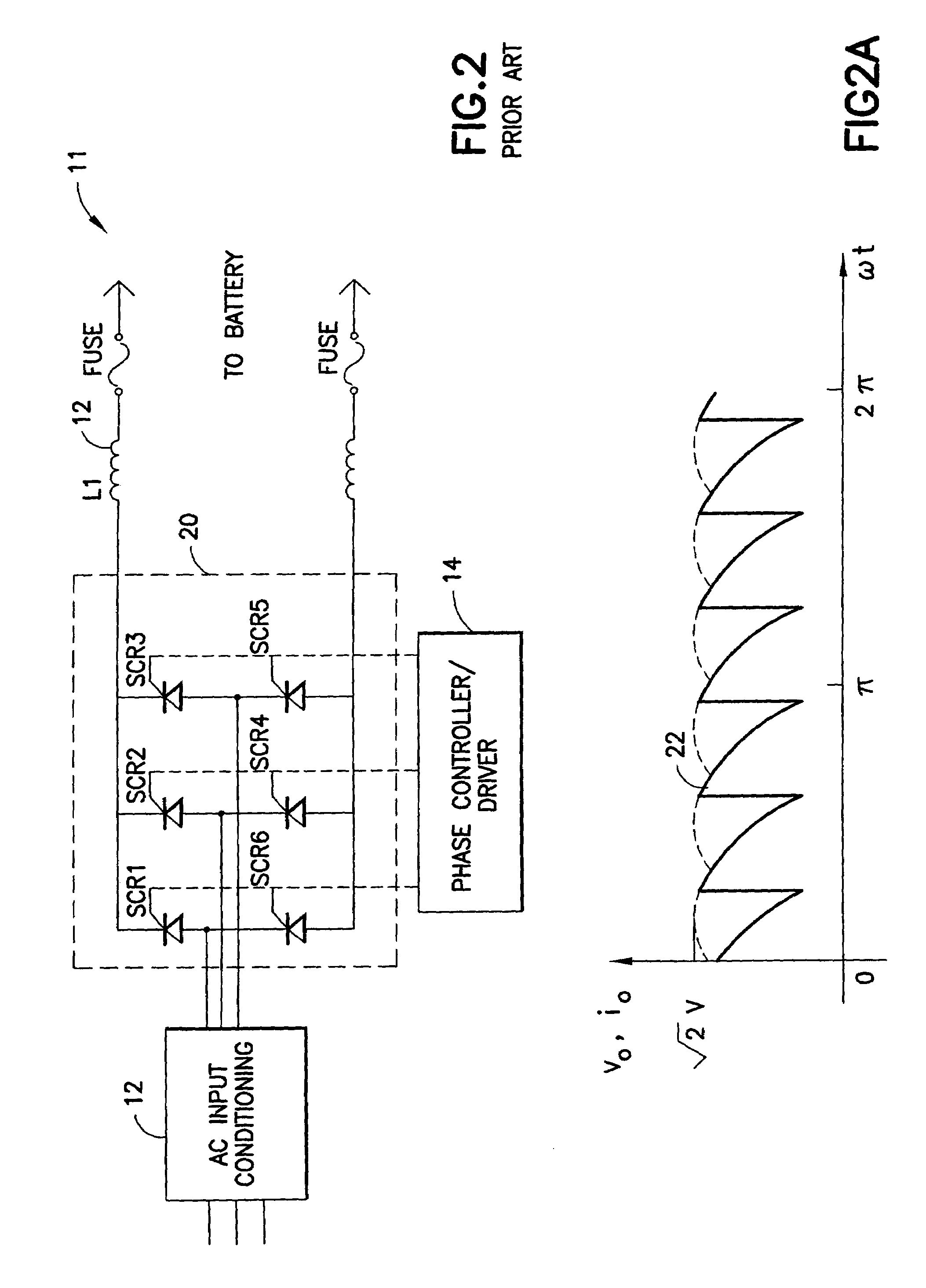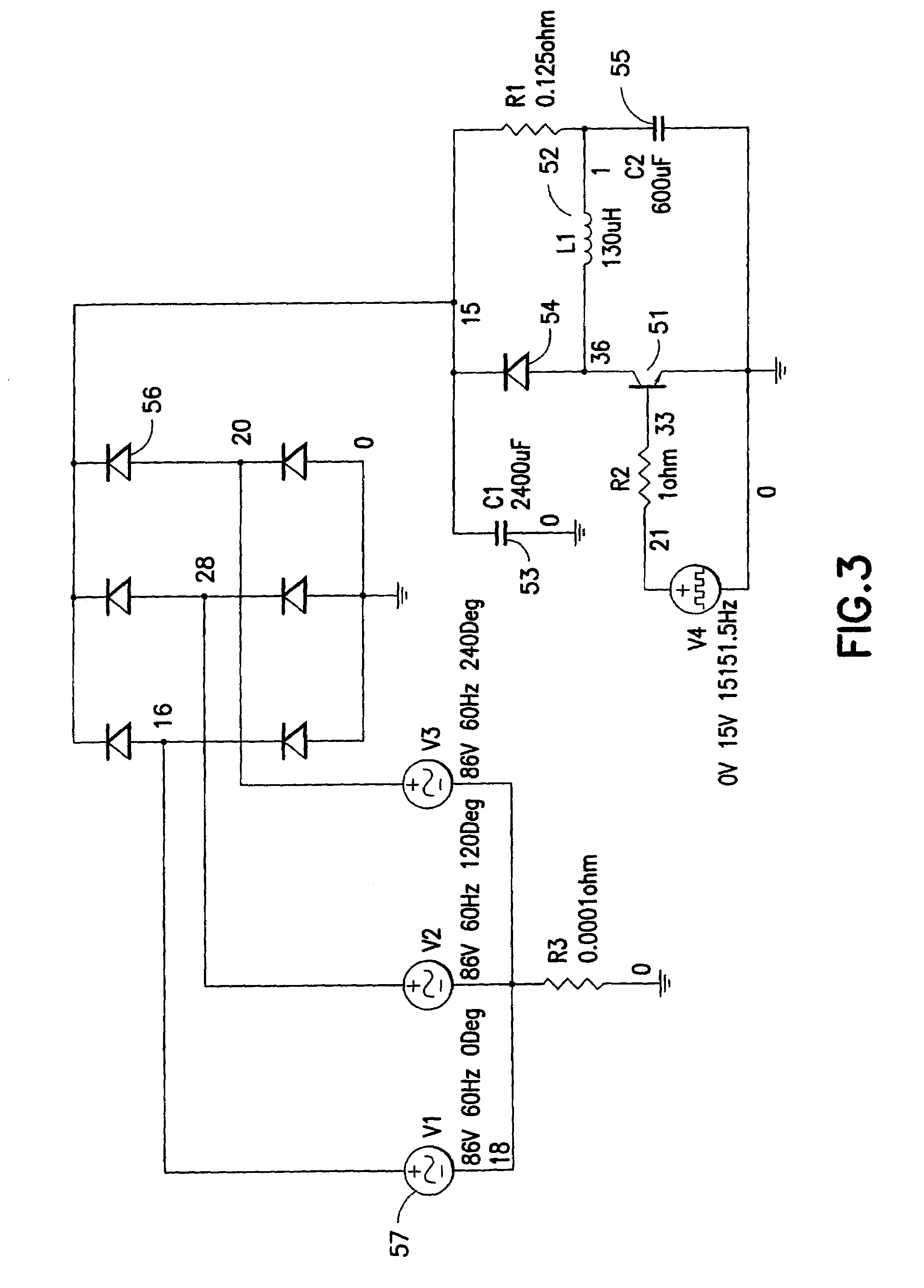Fast charger for high capacity batteries
a high-capacity battery and fast charging technology, applied in the direction of sustainable buildings, transportation and packaging, electrical generators, etc., can solve the problems of increased capital expenditure, significant inconvenience for users of high-capacity batteries, loss of employee time,
- Summary
- Abstract
- Description
- Claims
- Application Information
AI Technical Summary
Benefits of technology
Problems solved by technology
Method used
Image
Examples
example 1
Fast Charger for Charging a Single High Capacity Battery
[0360]FIG. 30 is a block diagram of a fast charger of the invention for charging a single high capacity, flooded lead-acid storage battery. Three-phase power is brought in through a Square D 60-ampere disconnect switch 260A and Bussmann 50-ampere input fusing 261A into a contactor 262A which is switched by a DSP controller 263A through a solid state relay 265A to apply power to the transformer 264A for charging. This three-phase step down transformer 264A, which converts the input 480 VAC to 106 VAC, is rated for a continuous 30 kVA with a temperature rise of only 80 degrees Celsius. The output of the three-phase transformer is wired to the power converter section 266A. The power converter section includes the following components:[0361]Rectifier 267A[0362]Filter section 268A[0363]An IGBT high frequency controlled switch 269A[0364]A freewheeling diode 270A[0365]Sandwiched bus structure[0366]Temperature sensing thermistor 271A[0...
example 2
Fast Charger for Charging Two High Capacity Batteries
[0387]FIG. 31 is a block diagram of a fast charger of the invention for simultaneously charging two high capacity batteries. The circuit is similar to the single fast charger in Example 1. The input switchgear, fusing and transformer, are sized to accommodate two batteries; other components are present in duplicate. Because the chargers share important parts in common, maintenance is simplified.
[0388]In the dual fast charger of FIG. 31, three-phase power is brought in through a larger Square D 100 ampere disconnect switch 300C and Bussmann 90A input fusing 301C into a higher capacity Square D 75A contactor 303C. The three-phase step down transformer 305C, which converts the input 480 / 600 VAC to 106 VAC, is rated for continuous 60 kVA with a temperature rise of only 80 degrees Celsius. The output of the three-phase transformer is electrically connected to two power converter sections 306C and 307C. The power converter sections and ...
example 3
Fast Charger with Controlled Current Draw
[0390]A controlled power charger can be constructed and arranged so that it will never draw more than 30 amperes from the three-phase 480 or 600 VAC line. This feature is very important in many industrial installations. Thirty ampere (30 A) three-phase service, 480 or 600 VAC, is presently in place for many of the existing chargers as well as to welding / service plugs found throughout typical manufacturing plants. The cost to run new 60 ampere or 100 ampere service is extremely prohibitive. It must often be done during third shift or weekend downtime, often with union labor, at overtime or 2× standard wage rates. The convenience and cost savings in being able to use existing service is a great advantage. All other types of fast chargers heretofore known require in excess of 40 amperes from the line. Such current draw requirements of the known types of fast chargers therefore would require new electrical service for all installations where 30 A...
PUM
| Property | Measurement | Unit |
|---|---|---|
| frequency | aaaaa | aaaaa |
| temperature | aaaaa | aaaaa |
| frequencies | aaaaa | aaaaa |
Abstract
Description
Claims
Application Information
 Login to View More
Login to View More - R&D
- Intellectual Property
- Life Sciences
- Materials
- Tech Scout
- Unparalleled Data Quality
- Higher Quality Content
- 60% Fewer Hallucinations
Browse by: Latest US Patents, China's latest patents, Technical Efficacy Thesaurus, Application Domain, Technology Topic, Popular Technical Reports.
© 2025 PatSnap. All rights reserved.Legal|Privacy policy|Modern Slavery Act Transparency Statement|Sitemap|About US| Contact US: help@patsnap.com



